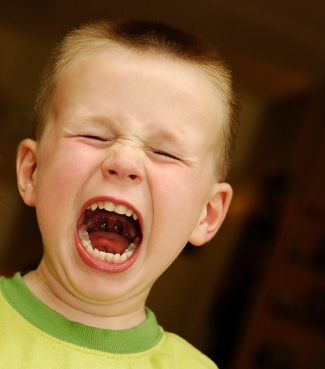Last week, I wrote about the importance of clear writing and talking when making a concept easy to understand.
This week, I will put it into practice.
I am struggling with clearly defining, writing, and talking about my research interest: the effect of music on emotion regulation. The first hurdle is to define “emotion regulation” itself.
My current fancy–and jargoy–definition goes like this:
Emotion regulation is the ability for a person to maintain a comfortable state of arousal by regulating his or her physiological and emotional experiences (Blaustein & Kinniburgh, 2010). It involves using various strategies and goal-directed processes to create a new emotional response or change a current one (Gyurak, Gross, & Etkin, 2011; Oschner & Gross, 2005). These strategies and processes can be explicit (e.g. effortful) or implicit (e.g. automatic) (Gyurak et al. 2011). Although definitions vary slightly, many are agreed that emotion regulation allows a person flexibility in how he or she responds and reacts to situations and emotions (Gyurak et al. 2011; McRae et al., 2010).
In my current (and evolving) “layperson” definition, emotion regulation is our ability to tolerate and change our emotions and stress level. We all experience stress and we all experience “big feelings.” What’s important is how we handle those feelings and sensations.
I am interested in how we can use music to help handle those feelings–both the emotional and the physiological–and in why music works.
This research interest stemmed from my time in Colorado working with children with a history of complex trauma (Speaking of defining jargony terms, “complex trauma” refers to a child’s exposure to multiple and prolonged traumatic events, which has a profound impact on their development).
Over and over again, I saw how a trigger–a sensation, a thought, an event, a dream, a memory–could set these children off. They would kick, scream, run, hit, curse, shutdown…and it often took a lot of time and effort to help them calm down again (i.e. to get regulated).
One thing that worked for most of the children was music. It worked differently for different children–some responded to singing, some to humming, and some to playing instruments. But the key is that it often worked.
And now I would like to learn more about how and why it works.
So there you go–a little background about my research interest and how I got interested in this topic. Thank you for letting me share this with you. If you have any questions, stories of your own, or ideas about emotion regulation, please share them in the comments section below!
References
Blaustein, M. E., & Kinniburgh, K. M. (2010). Treating Traumatic Stress in Children and Adolescents: How to Foster Resilience through Attachment, Self-Regulation, and Competency. The Guilford Press.
Gyurak, A., Gross, J. J., & Etkin, A. (2011). Explicit and implicit emotion regulation: A dual-process framework. Cognition & Emotion, 25(3), 400–412. doi:10.1080/02699931.2010.544160
McRae, K., Hughes, B., Chopra, S., Gabrieli, J. D. E., Gross, J. J., & Ochsner, K. N. (2009). The Neural Bases of Distraction and Reappraisal. Journal of Cognitive Neuroscience, 22(2), 248–262. doi:10.1162/jocn.2009.21243
Ochsner, K. N., & Gross, J. J. (2005). The cognitive control of emotion. Trends in Cognitive Sciences, 9(5), 242–249. doi:10.1016/j.tics.2005.03.010



 orcid.org/0000-0001-8665-1493
orcid.org/0000-0001-8665-1493






{ 0 comments… add one now }
You must log in to post a comment.